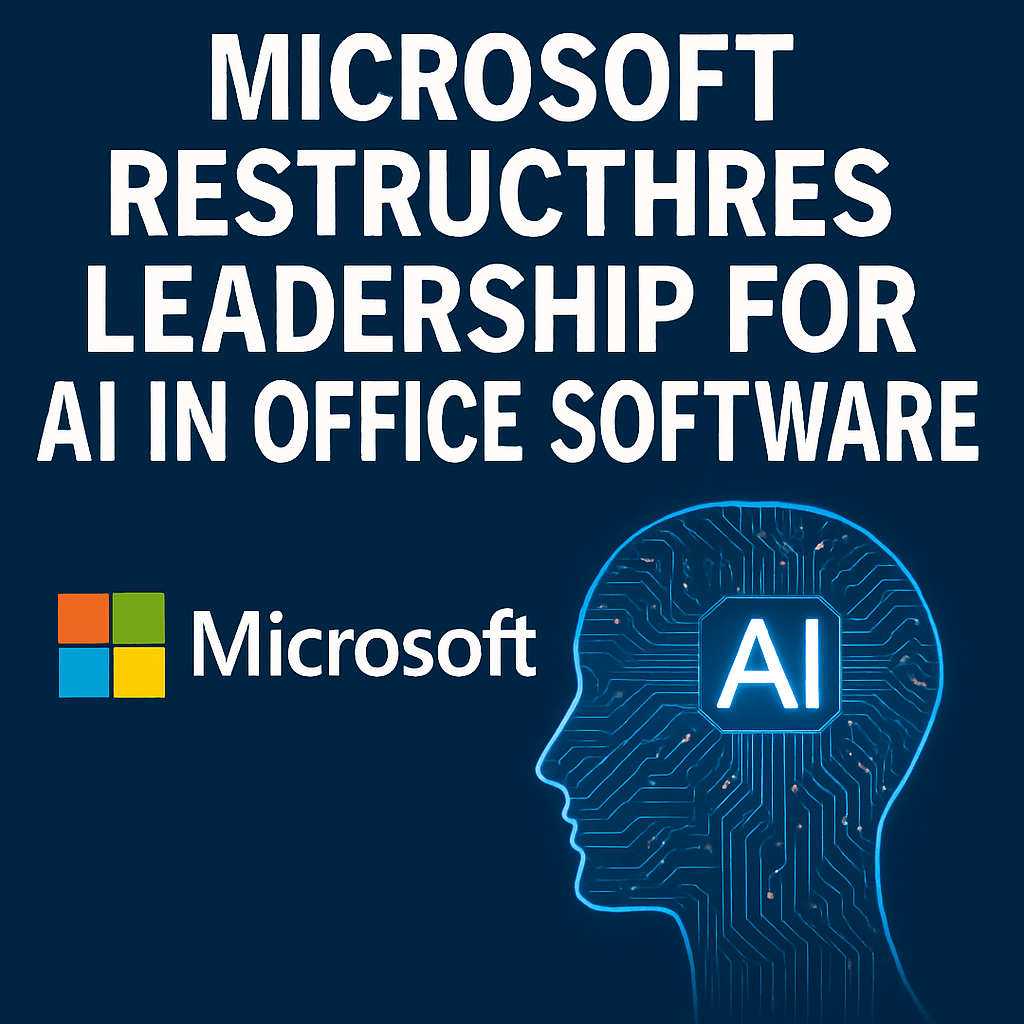Microsoft Restructures Leadership for AI in Office Software

In a significant reorganization aimed at accelerating the implementation of artificial intelligence (AI) within its productivity suite, Microsoft Corp. has appointed Ryan Roslansky, the CEO of LinkedIn, to oversee the teams responsible for the development of its widely-used email and productivity applications like Outlook, Word, and Excel. This shift emphasizes Microsoft’s commitment to enhancing workplace efficiency through AI capabilities, aligning with broader trends in the corporate software industry.
Overview of the Leadership Change
Effective immediately, Ryan Roslansky will expand his role to include management of the Office suite, while still reporting directly to Microsoft CEO Satya Nadella. The announcement was made to employees on Wednesday, positioning Roslansky as a key player in the integration of AI functionalities across Microsoft’s product offerings. He will report to Rajesh Jha, a senior engineering executive overseeing Windows and several business software initiatives.
Roslansky has been leading LinkedIn since 2020, a tenure marked by strategic growth after Microsoft acquired the platform in 2016 for $26 billion, eclipsing rival Salesforce Inc.’s bids. While Roslansky’s new responsibilities signify a tightening of oversight at Microsoft, a spokesperson reassured that LinkedIn would maintain the relative autonomy that has characterized its operation.
Impact of AI on Microsoft Office Products
Microsoft’s decision to consolidate leadership reflects its broader strategy to leverage artificial intelligence, particularly tools powered by large language models, to transform the functionality of traditional office applications. The company has been at the forefront of deploying AI tools, branding many of them under the Copilot label. These tools aim to automate many manual tasks in document creation, data management, and communication, enhancing productivity for users worldwide.
The recent surge in AI’s capabilities has raised customer expectations for software utility. Users now anticipate real-time suggestions, context-aware text generation, and seamless integration of diverse functionalities—all aimed at optimizing workflows. Analysts project that the integration of AI into productivity apps can lead to substantial time savings and improved business outcomes.
Strategic Insights from Industry Experts
“The move to integrate LinkedIn’s leadership into Office software reflects a growing recognition that the future of work will be heavily reliant on interconnected, AI-driven tools,” said Dr. Jane Holloway, a technology analyst at the Evergreen Institute. “This could redefine not just how individuals work, but also how teams collaborate across different platforms.”
Other Appointments and Organizational Changes
In tandem with Roslansky’s new role, Microsoft also announced that Charles Lamanna, a corporate vice president responsible for Dynamics 365 and various AI projects, will join Jha’s expanding organization. Lamanna’s expertise in AI and business automation positions him well to contribute to the company’s ambitious agenda, particularly as businesses seek integrated solutions that leverage both cloud capabilities and AI advancements.
Future Prospects for Microsoft Office and AI Integration
As Microsoft pivots toward a more AI-centric approach, the implications for its Office products could be substantial. The company is expected to continue investing heavily in AI research and development, potentially leading to innovative breakthroughs that further enhance productivity tools. By focusing on AI enhancements, Microsoft aims to not only retain its leadership position in the software market but also respond effectively to competition from other tech giants such as Google and Salesforce, which are also aggressively pursuing AI integration in their offerings.
The next few years will likely see transformative changes in how office tools function, with AI as the cornerstone of smarter, more adaptive applications that respond to the evolving needs of businesses. This shift underscores a critical period in corporate software development—one defined by the interconnected nature of AI capabilities and traditional productivity tasks.
Conclusion
Microsoft’s leadership reorganization, with Ryan Roslansky at the helm of revamping its Office suite through AI integration, represents a strategic vision geared towards a future where productivity is largely driven by intelligent software solutions. As these changes take root, industry observers and users alike will be keenly watching how this ambitious plan unfolds and reshapes the work environment.